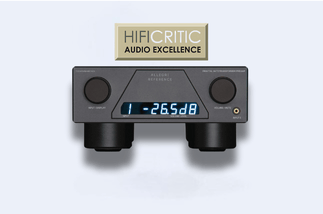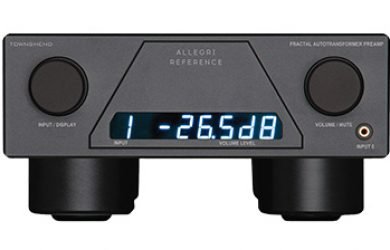In the early seventies, I made a version of the HQD speaker system which comprised two Hartley 24” bass drivers, a pair of stacked Quad ESL-57s and a pair of Decca Ribbon speakers (see http://www.marklev.com/systems/). The Decca’s were used as supertweeters here to augment the treble roll-off associated with the ESL-57s. Inevitably, the ribbons got damaged and repairs were routine and I became adept at repairing them. This system sounded awesome and I was a sad chappie when I had to leave all behind in Sydney when I came to the UK in 1978.
I had, however, been bitten by the supertweeter bug and I spent the next 15 years or so looking for the ideal supertweeter. The Pioneer supertweeters were amazing, but they were very bulky and were not a complete “package”, and the now defunct the excellent Murata spherical radiator Supertweeters had no level control and were very expensive. So I set about making a suitable unit in the Townshend Audio factory here in the UK. After two years of frustrating development, the Maximum Supertweeters arrived, in their cute miniature polished stainless steel case, in 1999, (now available also in satin black or matt silver). The secret of their success is the simplicity of the design and the set-up procedure. The 6-position crossover/level control allows them to integrate with speakers having a very wide range of sensitivity and their very small size allows them to fit in to almost any situation. Further, the supplied interconnecting wires make installation a doddle and there is no extra purchase necessary except for the Quad 57 brackets if needed.
Why do they work when we can only hear up to about 15 kHz and the Maximum Supertweeters extend to 80 kHz? The standard test for frequency response is to play a pure tone sine wave and to ask the listener to indicate if they can hear it or not. This test is basically flawed since sine waves rarely if ever occur in nature. Extensive research has shown that it is the combination of the lower frequencies with the high frequencies that makes sound more realistic, just as a high resolution digital image looks clearer than a low resolution image because of the sharper delineation of the visual edges due to the higher amount of information in the hi-res image. So it is with audio. The ear is very sensitive to very fast transients and is able to detect very small time arrival differences between the two ears. This capacity evolved in the wild where it is essential to hear the slightest unnatural sound (breaking twig) when sleeping in the open. This capacity only diminishes slightly compared with normal frequency roll-off sensitivity to sine waves with age- related hearing loss.
Many normal sounds have frequencies extending way above 20 kHz, (see http://www.cco.caltech.edu/~boyk/spectra/spectra.htm), hence the popularity of high resolution audio in the form of Hi-Res downloads, SACD, DVD Audio and quality vinyl replay. The higher the bandwidth, even up to 100 kHz, makes a difference in the fidelity of the overall perceived sound. This can easily be proved experimentally. Latest research suggests that the very high frequency sounds are picked up by the temple and even the eye, where they are sent directly to the brain by neuron transfer, totally bypassing the ear.
Why do Supertweeters work on CD replay which extends only to 21 kHz, when the speakers extend to 20 kHz or beyond? The most common tweeter is the dome tweeter. The dome tweeter may measure well on sine waves, but, when playing music, less than 1% of the electrical energy sent to the tweeter is converted to sound, the rest being dissipated over a short time by rippling around the dome, while slowly converting to heat. The wave pattern of this dissipating sound is chaotic, not unlike the wave pattern in the sea on a rough day in an enclosed harbour. The Supertweeter however, which gently rises in output from about 12 kHz up, does not suffer from this problem as the ultra-light ribbon ceases moving almost instantly when the signal stops. This ensures a very accurate high frequency transient response where before there was smearing. An interesting property of the ear is that it responds to the fastest rise-time signal, from the supertweeter and ignores the jumbled time- smeared output from the dome tweeter. This is why it is unnecessary to attenuate the existing tweeter when adding the supertweeter.
How do they sound? The effect on the sound with the addition of the Supertweeters is quite unexpected. Bass notes sound clearer, especially plucked string bass. Everything in the sound stage appears cleaner and smoother with far greater width and depth. There is a sense of ease about the sound. The effect is most profound when the supertweeters are taken away. It is not subtle! A peculiar effect is that they are inaudible in the listening seat when the main speaker is disconnected. The ear works in mysterious ways! And there are many thousands of happy Supertweeter owners out there who will, agree.


















